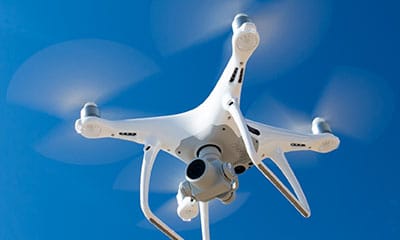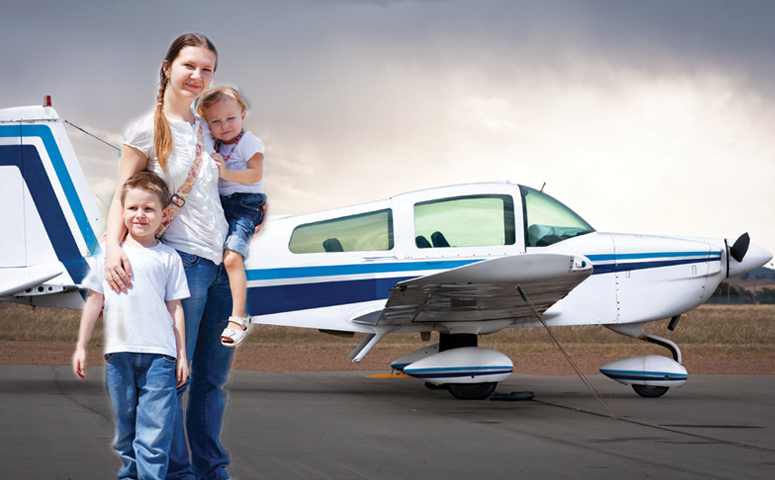Aviation Data Sharing: Leveraging Collective Insights to Minimize Risk
Aviation is an industry where learning through “trial and error” can be very costly. Missing critical threats and not trapping errors can have financial ramifications and a devastating human toll as well. While pilots, operations managers and other industry professionals tend to be collaborative by nature and good communicators by necessity, the formal and informal sharing of experiences and risk mitigation strategies can greatly contribute to managing operational risk.

Enter the concept of data sharing. Driven by a desire for continual improvement and enabled by today’s collaborative technologies, a growing number of organizations are documenting and sharing information on their operational risk environments. With systems in place that allow them to share their data securely and anonymously, many operators are willing to let others learn from their experiences while also benefiting from the problems encountered and solutions identified by their industry colleagues.
The result is data repositories that are both illuminating and informative for aviation professionals. Pilots, flight crews, ground crews and other stakeholders can use the information to avoid potential pitfalls and help their organizations operate more safely and with less risk to passengers, flight crews, aircraft, cargo and other assets. These shared databases can be particularly valuable to smaller organizations that are looking for a clearer understanding of their risk environment. This is true because the limited scope of their operations can limit their understanding of the risks they face today—with a shared aggregated database, they can understand the broader risks of the greater community and others on the horizon as their business or the industry changes.
Trust: Essential to Productive Data Sharing
A desire to learn, processes for submitting information and systems for doing so are all important aspects of data sharing. Another essential element is trust. The willingness of an organization both to report its strategies for success and operational challenges only exists in an environment where it is clear that the experiences of one participant are used solely for the purpose of educating and assisting others. Even when data is de-identified, as is the case in most systems, trust is crucial to the success of data sharing initiatives.
Easing Into Data Sharing With Data Collection
Jeff Mittelman is the founder of Mittelman Aviation Solutions and a data sharing expert who has worked with the FAA on the general aviation component of the Aviation Safety Information Analysis and Sharing (ASIAS) program. From his experience, the first step into data sharing is data collection. Developing processes for gathering information carefully and consistently, and for analyzing it internally, tends to give organizations the confidence to go further and share that data.
“An industry colleague of mine was a pioneer in data collection in general aviation and business aviation 20 years ago,” says Mittelman. “The focus he and others brought to the importance of documenting operational insights and outcomes created the foundation for the business aviation data collection and sharing that is taking place today.”
In many cases, data collection is as simple as typing up some observations following an incident, or even jotting them down by hand, to share with your flight department. Over time, the process tends to become more sophisticated and formalized, often assisted by hazard reporting systems that make it faster and more efficient to gather information. Data that is recorded and categorized following a set of standards is easier to share and more beneficial to readers.
From Mentorship to ASIAS Participation: Data Sharing in Many Forms
Organizations that participate in data sharing do so in multiple ways. This may include contributing to one of the approximately 185 data and information sources across government and industry that feed into the ASIAS program, for example. But there are many other ways to expand, and benefit from, the ever-growing “body of knowledge” in aviation.
For example, mentorship programs are an effective way for organizations to leverage and share the experience of their own team members, as are internal hazard reporting systems. Aircraft that automatically generate and record data, known as flight operations quality assurance (FOQA), represent another opportunity for collecting and sharing data, as do aviation safety roundtables, which enable in-person dissemination of information on best practices and risk mitigation.
Awareness of Data Variability Is Key
There is no question that data sharing helps aviation organizations operate more effectively. However, as with advice provided in any context, it must always be “taken with a grain of salt.” In other words, before initiating action on any information received, operators must assess it to ensure that it aligns with their understanding of a particular scenario.
Contributors are, no doubt, sharing their data and insights in good faith, and the entities that are aggregating that data typically vet it to a degree. However, the organization that chooses to put the information to use is, of course, responsible for analyzing it and balancing it with their own understanding of the operational risk environment.
It is important to note that vetting should not be confused with censoring. The former helps ensure that the data shared is accurate; the latter can mean omitting important and sometimes embarrassing details, and that should not be done. In order for data sharing to provide the maximum benefit to participants, everyone involved must share data concerning operational risk observations, occurrences and mitigation strategies.
Starting Small in Aviation Data Sharing
Deciding to get involved in aviation data sharing does not mean that an operator has to provide all of its data. Sharing even a small amount of information on specific focus areas produces two important benefits. First, it helps other organizations that are interested in those same areas. Second—and perhaps more importantly—it begins to change an organization’s culture and help team members see that data sharing is not a threat to anyone’s reputation or livelihood. Over time, small successes in data sharing help create confidence that the information provided will be used in the right way.
“What both my colleague and I have found to be true in our ongoing work in data collection and sharing is that organizations with a culture that see these practices as opportunities for improvement, with no risk of repercussions, get the most benefits from them,” says Mittelman. “I can’t speak for every industry, but in general aviation and business aviation, the focus is squarely on process improvement and risk mitigation. Organizations are not looking to use incident data in individual performance evaluations. They simply want to improve operations and enhance safety.”
The Future of Aviation Data Sharing
Airlines have made great strides in data sharing and their safety record reflects their efforts, but general aviation and business aviation are still in their infancy with regard to data sharing. That is changing, however. “NBAA (the National Business Aviation Association) and its Safety Committee actively support data collection and sharing concepts and initiatives,” says Mittelman.
As more organizations get comfortable with the concept, it will surely become more deeply woven into the fabric of the industry resulting in better risk identification for all. This is important, since everything from new technology to ever-more-crowded skies will create a greater need for access to in-depth information in the years ahead if operators are to continue mitigating risk successfully.
“The ASIAS program and other initiatives are about addressing the known aviation risks,” adds Mittelman. “But they also have it as their mission to help operators proactively anticipate previously unknown risks even before they result in costly incidents. Aviation stakeholders of all kinds should be encouraged by the progress we’re making in that direction.”
To learn about the role Global Aerospace plays in risk mitigation through our products and programs, please contact us at your convenience.




